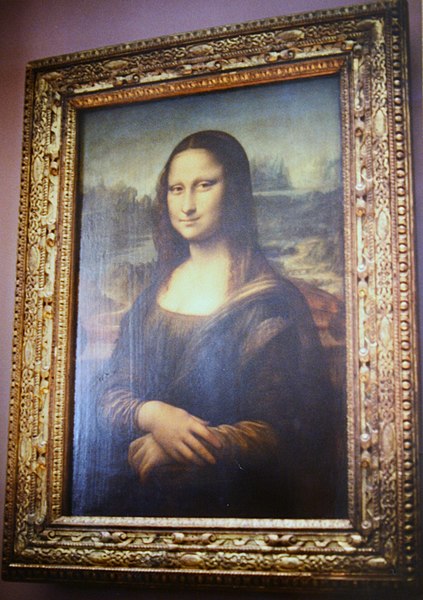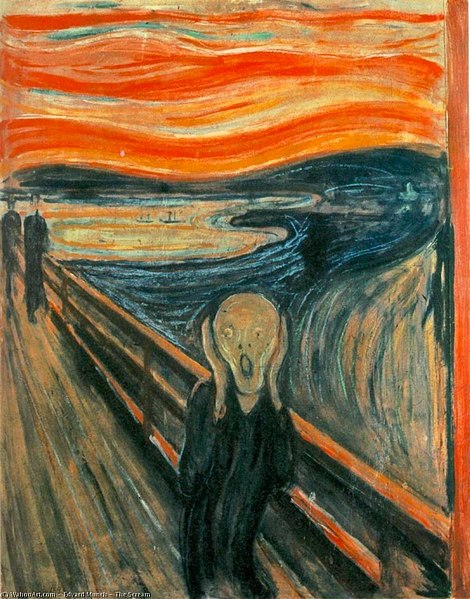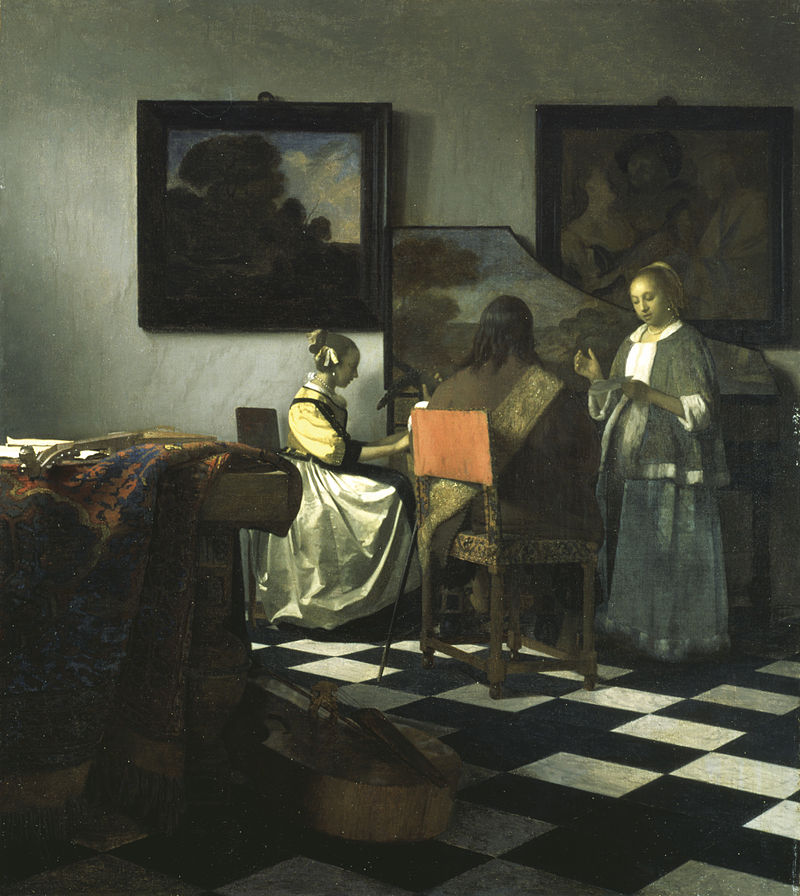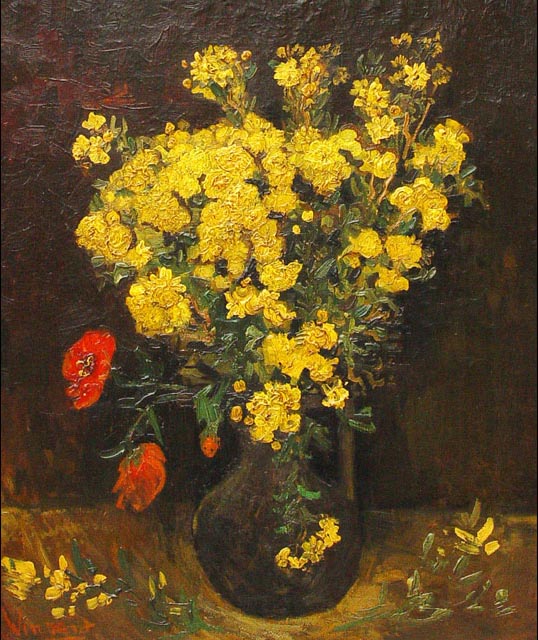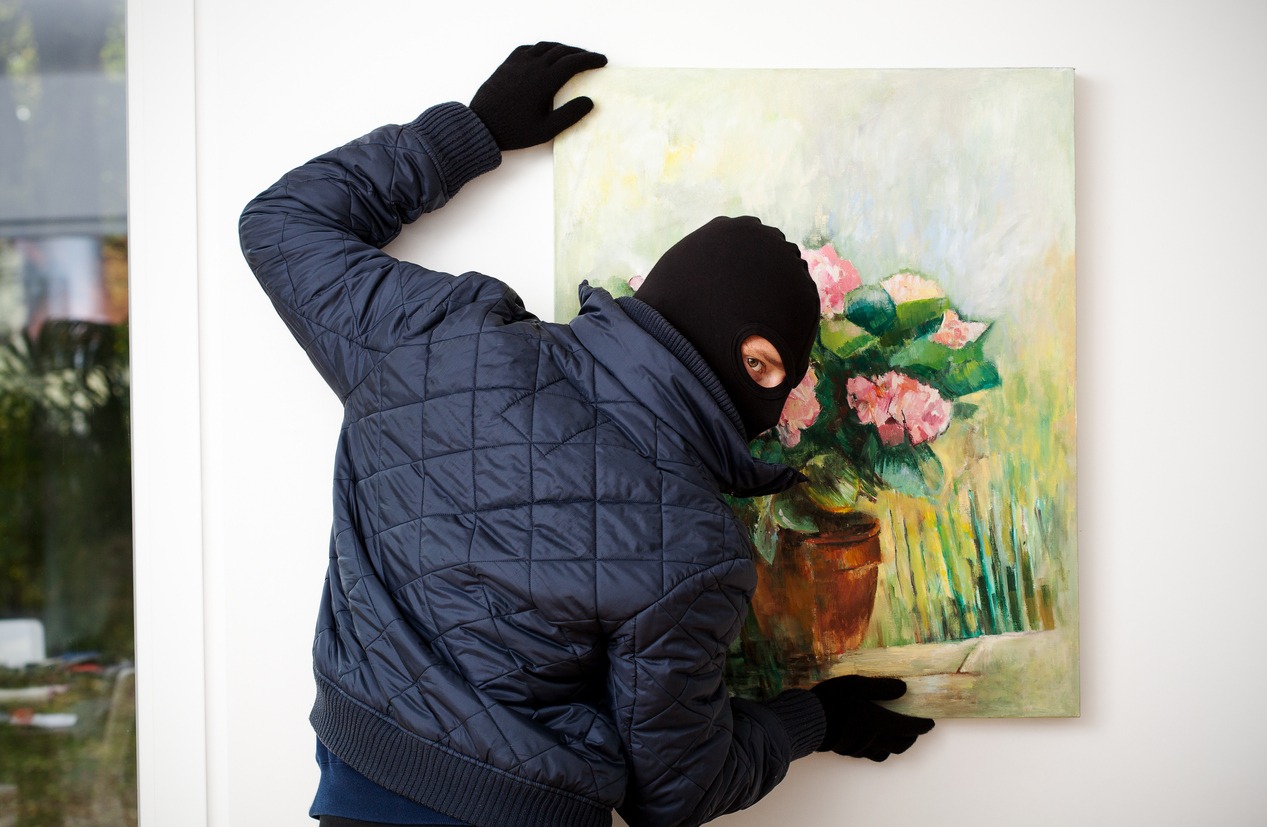The theft of famous paintings is a captivating chapter in the world of art, marked by intrigue and mystery. These high-profile thefts not only result in the loss of invaluable cultural heritage but also captivate the public imagination, weaving tales of daring heists and clandestine dealings that could rival any work of fiction.
Despite the allure of these stories, the disappearance of iconic artworks leaves a void in the global artistic legacy, prompting a relentless pursuit by authorities and art enthusiasts alike to recover these stolen treasures. The quest to reclaim these masterpieces is a testament to the enduring value and emotional resonance that these works of art hold for humanity. In this article, we will take a look at the stories of the famous paintings that have been stolen.
Historical Context of Art Theft
Art theft is not a phenomenon of the modern era; it has been a part of human history since the creation of valuable and desirable objects. The motives behind art theft have ranged from the desire for personal possession and financial gain to the intent to control cultural heritage and history. Understanding the historical context of art theft provides insight into the complexities of human behavior and the evolving value we place on art.
The Ancient and Medieval World
In ancient times, art theft was often a byproduct of war and conquest. Victorious armies would plunder art and cultural artifacts as trophies, symbolizing their dominance over the conquered. This form of art theft was not only about accumulating wealth but also served to erase or assimilate the cultural identity of the defeated. The Romans, for example, were known to loot art from the regions they conquered, bringing it back to Rome as a testament to their power and civilization.
Renaissance to 18th Century
During the Renaissance, appreciation for art saw a significant revival, with wealthy and powerful commissions of works from the greatest artists of the time. This period also saw the emergence of art theft for personal collection, often driven by the desire to possess beauty and to display wealth and status. Nobility and the church played significant roles in both the commissioning and, occasionally, the illicit acquisition of art.
19th Century Onwards
The 19th and 20th centuries marked a turning point where art theft became more associated with criminal activity beyond the scope of war and conquest. The rise of museums and private collections increased the value of art, making it a lucrative target for thieves. The infamous theft of the “Mona Lisa” in 1911 from the Louvre by Vincenzo Peruggia, who was driven by a misguided sense of nationalism, highlighted the growing allure of famous artworks as targets for theft.
The Role of Art in Society and its Impact on Theft
The changing role of art in society has had a profound impact on the nature of art theft. As art became more than a symbol of power or religious devotion and transformed into an object of aesthetic and historical value, the motivations behind its theft diversified. The 20th century saw the rise of art theft for insurance fraud, ransom, and as a form of currency in the criminal underworld.
The historical context of art theft reveals a complex interplay between the appreciation of beauty, the desire for power, and the allure of financial gain. It underscores the evolving challenges faced by those tasked with protecting cultural heritage, reflecting the shifting values and technologies of each era. As we continue to grapple with the issue of art theft, understanding its historical roots can provide valuable insights into both its prevention and resolution.
Notable Stolen Paintings
The records of art history are punctuated by numerous high-profile thefts that have shocked and captivated the public. These stolen masterpieces are not just missed for their aesthetic value; they are also cultural icons whose absences are deeply felt within the global artistic community. Below are some of the most infamous cases of art theft, each with its own story of mystery and intrigue.
The Mona Lisa by Leonardo da Vinci
Perhaps the most famous art theft of all time is the 1911 theft of the “Mona Lisa” from the Louvre Museum in Paris. The painting was stolen by an Italian handyman named Vincenzo Peruggia, who believed the artwork should be returned to Italy for display. The theft went unnoticed for 24 hours, highlighting the vulnerability of even the most prestigious museums. The “Mona Lisa” was recovered two years later in Italy, and the event significantly contributed to the painting’s global fame.
The Scream by Edvard Munch
Edvard Munch’s iconic work, “The Scream,” has been the target of theft not once but twice. The first theft occurred in 1994 from the National Gallery in Oslo, and the painting was recovered later that year. In 2004, another version of “The Scream” was stolen from the Munch Museum in Oslo, along with Munch’s “Madonna.” Both pieces were recovered in 2006. These thefts underscore the allure of highly recognizable works to thieves.
The Concert by Johannes Vermeer
“The Concert” is one of the most valuable paintings currently missing, having been stolen in 1990 from the Isabella Stewart Gardner Museum in Boston. The theft was part of the largest art heist in history, with works valued at a total of $500 million taken. Despite a $10 million reward for information leading to their recovery, none of the artworks, including “The Concert,” have been found, making it one of the art world’s most enduring mysteries.
Poppy Flowers by Vincent van Gogh
Vincent van Gogh’s “Poppy Flowers,” also known as “Vase with Viscaria,” was stolen from the Mohamed Mahmoud Khalil Museum in Cairo in 2010, marking the second time the painting was taken from the same museum; the first theft occurred in 1977, but the painting was recovered a decade later. The 2010 theft remains unsolved, and “Poppy Flowers” is still missing, highlighting the challenges in protecting and recovering stolen art.
Other Noteworthy Stolen Paintings
In addition to the widely known cases of stolen art such as “The Mona Lisa” and “The Scream,” there are several other notable artworks whose thefts have left indelible marks on the art world. These cases underscore the ongoing challenges faced by institutions in safeguarding cultural treasures.
- “Storm on the Sea of Galilee” by Rembrandt van Rijn: This is Rembrandt’s only seascape and was among the 13 artworks stolen during the infamous 1990 heist at the Isabella Stewart Gardner Museum in Boston, alongside Vermeer’s “The Concert.” The painting depicts a dramatic scene from the New Testament, and its theft has left a significant void in Rembrandt’s oeuvre that is accessible to the public. Despite extensive efforts, “Storm on the Sea of Galilee” remains missing.
- “Portrait of a Young Man” by Raphael: Believed to have been painted by Raphael around 1513-1514, “Portrait of a Young Man” was looted by the Nazis during World War II from the Czartoryski Museum in Kraków, Poland. The painting is considered one of the most important artworks missing since the war, and its current whereabouts are unknown. The loss of this Renaissance masterpiece is a stark reminder of the impact of conflict on cultural heritage.
- “Nativity with St. Francis and St. Lawrence” by Caravaggio: This large painting by Caravaggio was stolen in 1969 from the Oratory of San Lorenzo in Palermo, Sicily. The theft is one of the most infamous art crimes in Italian history. Despite various investigations and rumors about the painting’s fate within the Sicilian Mafia, it has never been recovered, and its absence is a significant loss to Baroque art history.
- “The Just Judges” by Jan van Eyck: Part of the larger Ghent Altarpiece, “The Just Judges” panel was stolen in 1934 from Saint Bavo’s Cathedral in Ghent, Belgium. Despite numerous ransom demands and extensive police investigations, the panel has never been recovered. The ongoing mystery of its disappearance continues to intrigue art historians and crime investigators alike.
The theft of these masterpieces is not just a loss of valuable assets; it represents a theft of history, culture, and shared human experience. Each missing piece deprives society of the chance to experience and learn from the genius of the artists who created them. The efforts to recover these and other stolen artworks continue, as does the hope that they might one day be returned to their rightful places for the world to appreciate.
The Challenges in Recovering Stolen Art
The recovery of stolen art presents a myriad of challenges, reflecting the complex nature of art theft crimes and the intricacies of the art market. These obstacles make the process of locating and returning stolen artworks to their rightful owners a daunting task.
- Legal and Jurisdictional Issues: Art theft often involves crossing international borders, which can complicate recovery efforts due to varying laws and the need for cooperation between different countries’ legal systems. Jurisdictional disputes can arise, slowing down or even halting the recovery process.
- Lack of Documentation: Proper documentation, provenance, and registration of artworks are not always maintained, making it difficult to identify and claim stolen pieces, especially for older works that have changed hands multiple times.
- Art Market Opacity: The art market can be opaque, with private sales and undisclosed details, allowing stolen works to be sold or exchanged without detection. This lack of transparency hinders the tracking of stolen items.
- Forgeries and Misattributions: The existence of forgeries or misattributed works can complicate the identification of recovered art. Authenticating a piece and proving it is the stolen artwork and not a copy or a different work altogether can be a significant challenge.
- Fear of Repercussions: Individuals who unknowingly purchase stolen art may be reluctant to come forward due to fear of legal action or financial loss, as they may have to surrender the artwork without compensation.
- Ransom and Negotiation: Thieves may demand ransom for the return of stolen artworks, putting institutions in a difficult position. Negotiating with criminals can be ethically and legally problematic.
- Time Factor: The longer an artwork remains missing, the harder it becomes to recover. Leads go cold, and the artwork can change hands multiple times, disappearing into private collections.
- Criminal Networks: Stolen art can become part of the criminal underworld, used as collateral or currency. Penetrating these networks to recover artworks requires significant resources and expertise.
- Insufficient Resources: Law enforcement and cultural institutions often lack the resources and expertise needed to investigate art thefts effectively and recover stolen works, especially when dealing with high-profile international cases.
- Public Awareness and Interest: Generating and maintaining public interest in stolen art can be challenging, yet public awareness is crucial for generating leads and tips that may aid in recovery.
High-Profile Recoveries
Despite the numerous challenges in recovering stolen art, there have been several high-profile successes that have brought hope to the art world. These recoveries often involve a combination of diligent investigative work, technological advancements, and, sometimes, sheer luck.
- “Madonna of the Yarnwinder” by Leonardo da Vinci: Stolen in 2003 from Drumlanrig Castle in Scotland, this valuable painting by Leonardo da Vinci was recovered in 2007 in a police sting operation in Glasgow. The recovery was the result of a long-term undercover operation, highlighting the effectiveness of coordinated law enforcement efforts.
- “The Adoration of the Mystic Lamb” by Jan van Eyck: Part of the larger Ghent Altarpiece, this panel was returned in 1945 after being hidden by the Nazis during World War II. The Monuments Men, a group of Allied soldiers tasked with protecting cultural property, played a crucial role in its recovery, showcasing the importance of dedicated units for art recovery.
- “Two Boys with a Bladder” by Joshua Reynolds: This painting was one of several pieces stolen from the Houghton Hall estate in the UK in 1979. It was recovered over 30 years later, in 2011, by the Art Loss Register, a private database of stolen, missing, and looted artwork. The painting’s recovery underscores the value of such databases in tracking and recovering stolen art.
- “Portrait of a Lady” by Gustav Klimt: Considered lost for nearly 23 years, this Klimt painting was discovered in 2019, hidden within the walls of the same gallery it was stolen from in Italy. The remarkable discovery was made by gardeners clearing ivy, and it’s believed the artwork had been stashed there by thieves who never returned for it. This recovery highlights the unpredictable nature of art recoveries and the possibility of finding lost artworks in the most unexpected places.
Factors Leading to Successful Recoveries
- Dedicated Investigation Teams: Many successful recoveries are the result of persistent efforts by specialized police units and art recovery experts who have the knowledge and resources to track down stolen artworks.
- International Cooperation: Collaboration between countries and law enforcement agencies plays a crucial role, especially when dealing with art that has been transported across international borders.
- Technological Advances: The use of technology, including databases of stolen art, forensic analysis, and digital surveillance, has significantly improved the chances of recovering stolen artworks.
- Public Involvement: Tips from the public, often encouraged by rewards, can lead to breakthroughs in cases that have gone cold.
- Art Market Scrutiny: Vigilance by auction houses, galleries, and collectors in checking the provenance of artworks can lead to the identification and return of stolen pieces.
Conclusion
The theft and subsequent recovery of famous paintings is a complex narrative that intertwines elements of crime, art, history, and justice. While the loss of these masterpieces is a blow to cultural heritage, the stories of their recovery are a testament to the perseverance and dedication of the global art community. Each recovered piece not only restores a part of our shared history but also reinforces the importance of protecting and valuing the art that connects us to our past and shapes our collective identity.


